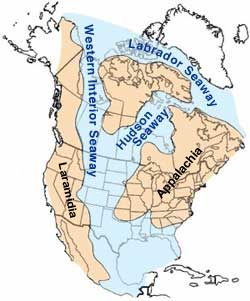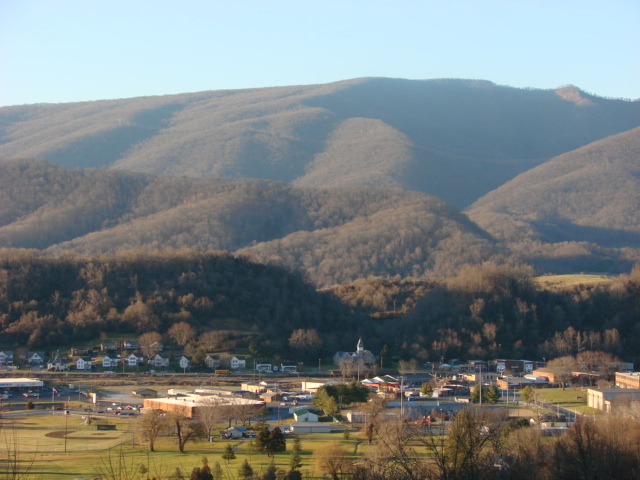I apologize for straying from natural history this time, but I can’t resist commenting on the irrational hysteria surrounding the verdict of the George Zimmerman trial. This case would have never become a national media sensation without Al Sharpton. Al Sharpton has made a career of fomenting unfounded racial resentment. It is true that African-Americans are treated unfairly by the U.S. justice system. Voter ID laws, disproportionate penalties for crack compared to cocaine, and stop and frisk policies are just some examples of how local governments subjugate African-Americans. However, Al Sharpton has a history of inciting racial hostility over causes that are not representative of unfair treatment.
Al Sharpton became famous in the 1980’s when he led protestors against the jury’s decision in the Bernard Goetz case. Four black teenagers had attempted to mug Goetz on a subway, and he shot all of them. Most people would regard Goetz as a hero who stood up to some bullies. But not Al Sharpton. He thought it unfair that black criminals didn’t get to steal from whitey. Apparently, Al Sharpton wants to make it illegal for white people to defend themselves when faced with a violent attack from black people. This seems to be a recurring theme in his protests. In 1991 Al Sharpton incited an anti-semitic riot in the Crown Heights neighborhood of Brooklyn that resulted in the death of a Jewish foreign exhange student and a gentile who the crowd thought was Jewish. Sharpton has called Jews “diamond merchants” with “blood on their hands.”

Al Sharpton incited a violent anti-Semitic riot in 1991, resulting in 2 deaths.
Most famously, Sharpton is known for publicizing Tawana Brawley’s phony rape story. The girl falsely claimed she was raped by 4 white men, including a police officer. Like the Zimmerman case, it became a national media sensation. The story was completely untrue and Sharpton had to pay a $65,ooo libel settlement for falsely claiming that a law officer kicked Brawley. Despite his discredited history as an anti-semitic, fraudulent, race-baiter, MSNBC gave him a platform with a daily hour long news/commentary show. Here, he was free to cry wolf again and make up false allegations of unjust treatment in the George Zimmerman case. The media jumped on the bandwagon and unfairly lynched the unfortunate clod.

After his role in the Tawana Brawley scandal, Sharpton should have disappeared from the public view in disgrace. Instead, he’s been given a tv show.
I’m not a big fan of nosy wannabee policemen, and when I first heard about the Zimmerman case, it sounded terribly unjust, but after studying the details, I changed my opinion. At the very least the jury couldn’t assume without a reasonable doubt that Zimmerman was lying and had initiated the fight. The not guilty verdict was the only logical conclusion a reasonable jury could have made. I’m convinced, based on the facts and logic of the case, that it was Trayvon who initiated the fight. Here’s my reasoning.
1. Zimmerman called the police before he began following Martin. If he had planned to kill Martin, he wouldn’t have called the police and risked getting arrested for murder.
2. Martin referred to Zimmerman as a “creepy ass cracker.” Zimmerman had a black girlfriend in high school, and a black friend vouched for him on the talk show circuit. This suggests that Martin was the racist, not Zimmerman.
3. Martin started running–an act that DID make him look suspicious. Moreover, if he would have kept runniing, there is no way Zimmerman could have caught up to him. This suggests that Zimmerman was telling the truth–Martin did circle back and ambush him. I used to work as a door-to-door salesman. It was not at all unusual for people to ask me, while I was walking, what I was doing in their neighborhood. I explained. I did not run or sucker punch them. When I worked in black neighborhoods, police often stopped me and asked what a white guy was doing in a black neighborhood. A normal person would simply ask a stranger why they were following him. Martin likely decided to act with hostility instead of civility.
4. FBI crime statistics and other sources show that black people are anywhere from 39 to 65 times more likely to violently attack white people than vice versa. These numerical odds make it overewhelmingly likely Martin was the aggessor.
5. Zimmerman’s bloody nose, black eyes, cuts on the back of his head, and Martin’s bloody knuckles all support Zimmerman’s story.

Zimmerman’s injuries were more convincing than the media originally reported.
6. John Good witnessed Martin on top of Zimmerman, bashing his head into concrete. (Martin was not unarmed. He had his fists.) This evidence alone would have stopped a Grand Jury from indicting Zimmerman. Based on this witness testimony, there should have never been a trial. I can’t believe John Good was a witness for the prosecution. He supports the defense’s case.
Alan Dershowitz, a Harvard law professor and a very liberal defense attorney, believes the special prosecutor in the Zimmerman case should be disbarred for not making exculpatory evidence available to the defense in the affidavit that charged Zimmerman. The original prosecutor decided they couldn’t make a case based on the evidence. But thanks to the misguided outcry led by Al Sharpton, Florida’s idiotic governor appointed a special prosecutor who bypassed a Grand Jury.
The judge who presided over this case was a very stupid woman. She should have dismissed the case for lack of evidence. She also allowed about 10 people to purjure themselves when they identified the screaming on the phone as either Martin or Zimmerman. This was perhaps the most ludicrous part of the trial. All of Martin’s friends and family testified it was Martin screaming; all of Zimmerman’s friends and family testified it was Zimmerman screaming. In truth a person can’t recognize another person’s scream recorded from a distance on a cell phone.
The reaction to the verdict has been irrational. Some black people say they can’t go jogging in a hoodie any more. This is ridiculous. Martin wasn’t shot because he was wearing a hoodie; he was shot because he probably acted like a crazy animal. A black man jogging in a hoodie in a white neighborhood is a lot less likely to be attacked than a white man jogging in a black neighborhood. Some people just need to get a grip on reality.
I am a liberal and usually agree with Bill Maher and the talking heads at MSNBC. But they are so wrong about the Zimmerman case. Bill Maher has a segment on his show called dispatches from the bubble in which conservatives are trapped in a bubble where facts and logic can not penetrate. When it comes to the Zimmerman case, it is Bill Maher, MSNBC pundits, and African-American talking heads who are in a bubble where facts and logic can not penetrate. Even Maher’s jokes about Zimmerman are stupid. Maher joked that Zimmerman’s defense team made him seem like a “stupid pussy” because they admitted Zimmerman was getting beat up. According to this reasoning, anyone who ever gets beat up is a “stupid pussy.” Bill Maher looks like a physical wimp. I am 100% sure I could beat the shit out of Bill Maher. According to his logic, this would make him a “stupid pussy.” On the most recent episode of his show, he also stupidly cited statistics showing black men were 354% more likely than whites to be killed in stand your ground cases. Does he not realize this is because black men are overwhelmingly the aggressors? They are being shot more often because they are attacking more often.
**********
Barbara Walters picked Jenny McCarthy to replace Elizabeth Hasselbeck on the tv show, The View. The move was a kind of dumb blonde exchange. The cast of The View also includes the stupidity of Whoopi Goldberg who doesn’t think Roman Polanski committed “rape-rape” when he drugged an underage teenaged girl and forced her to have sex with him.
I regret writing this part of my essay because it probably ruins any chance I might have with Jenny McCarthy, but I think her outspoken crusade against vaccination makes her a dumb bunny. She wrongly assumes vaccinations can cause autism because her son manifested symptoms of this disorder after he was vaccinated. According to this logic, I could eat lunch, walk outside to get the mail, and get killed by a car. Eating lunch caused me to get hit by the car.
Over 2 dozen scientific studies have failed to find any link between vaccines and autism. Pediatricians unanimously urge parents to get their children vaccinated. So the controversy is between the unanimous opinion of medical science vs. a Playboy bunny whose sole talent is showing off her birthday suit to the entire world.

Jenny McCarthy sitting in the tickle chair on the Howard Stern Show. Howard Stern tickled her til she peed in her pants.
The following is a link to nude photos of Jenny McCarthy. She might be fun to play with in bed and arousing to look at, but that does not qualify her as an expert on vaccinations. I would post the nude photos directly here, but some people are afraid a kid might see boobs.
https://www.google.com/search?hl=en&site=imghp&tbm=isch&source=hp&biw=1016&bih=563&q=naked+photos+of+Jenny+McCarthy&oq=naked+photos+of+Jenny+McCarthy&gs_l=img.12…1047.6234.0.8234.30.3.0.27.0.0.125.329.1j2.3.0….0…1ac.1.21.img.NeyiPO7QSZ4
Vaccinations help make people immune to such once widespread and potentially fatal diseases as the measles, tetanus, diptheria, whooping cough, hepatitis, mumps, chicken pox, and meningitis. Vaccinations have almost eradicated these diseases.

Corynebacterium diptheriae–the bacteria that causes diptheria. The death rate for children under the age of 5 who get diptheria is 20%.
In California the “natural living” movement is popular and many parents are opting not to get their children vaccinated. Diseases such as the measles and whooping cough are returning and killing babies. “Natural living” also includes natural mortality due to infectious diseases. Some people choose to be misinformed or are incapable of discerning propaganda from scientific fact and logic. This irks me to no end.











































